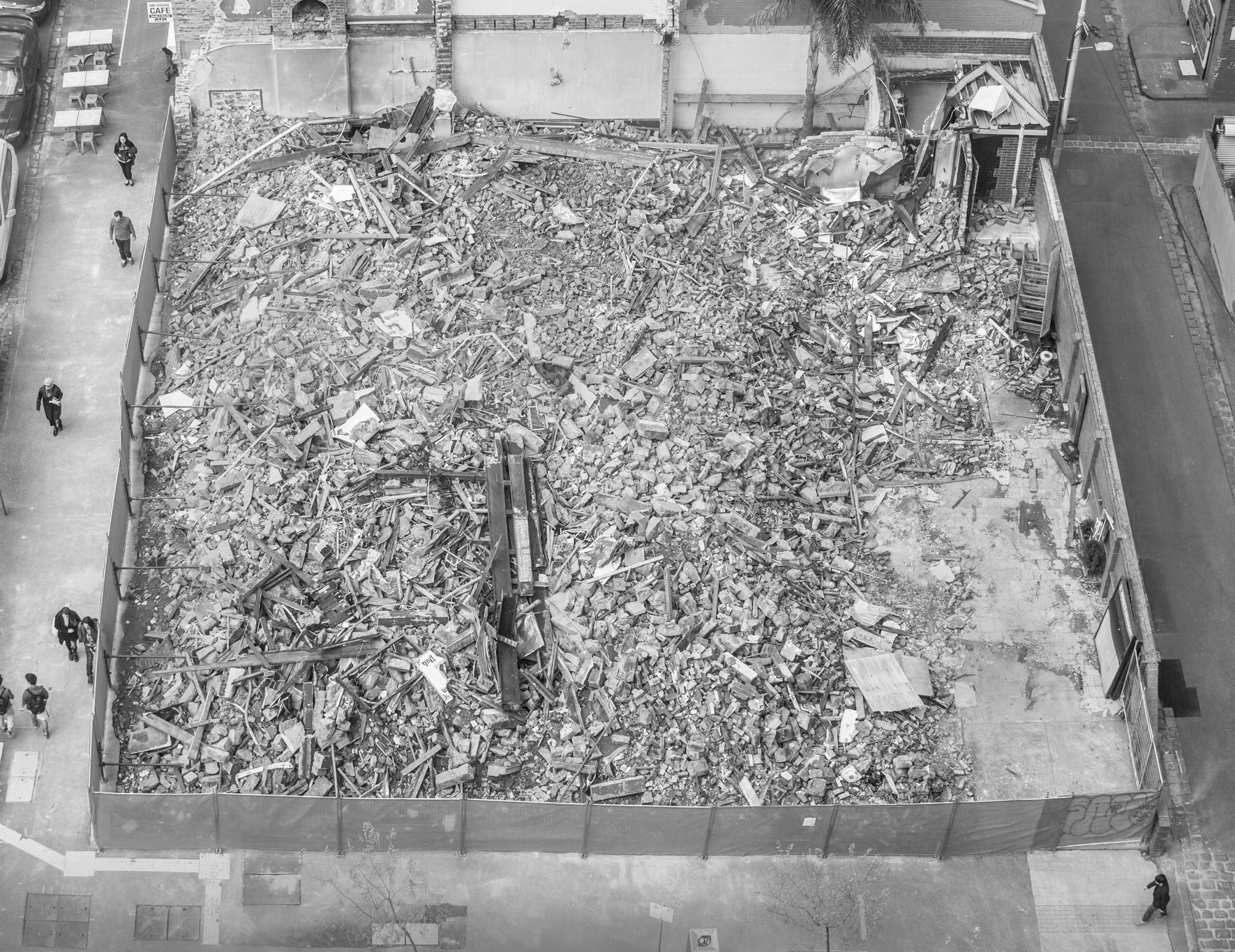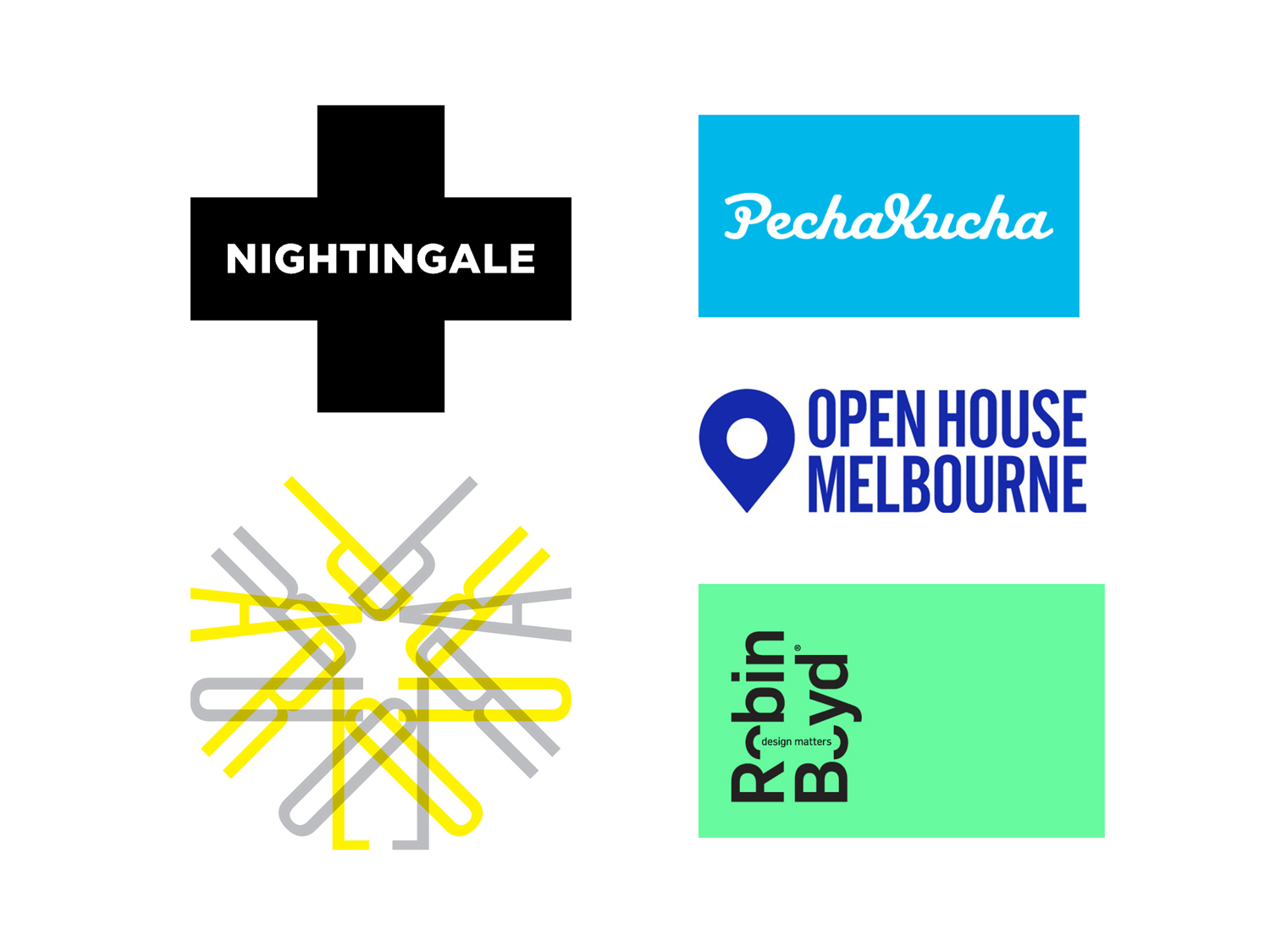Blog | A new advocacy player

In July last year, ArchiTeam launched a working group tasked to find ways it might “educate the public about the value of architects through marketing and public outreach”. This endeavour proposes to engage in both marketing and advocacy activities, a canny mix of pragmatism and altruism that I believe has the power to simultaneously promote our profession and protect the built environment.
But before I elaborate, it’s worthwhile asking the question, why?
There are at least a dozen different organisations competing for a slice of the Melbourne architectural advocacy pie, and ArchiTeam is far from the largest, best funded, most widely known or most experienced in the sector. These are pretty compelling reasons not to get involved with the often poor rewards of architectural advocacy. However, they hardly paint a full picture of the importance of this work, nor the role ArchiTeam might have to play.

The Corkman Pub, illegally demolished by developers Raman Shaqiri and Stefce Kutlesovski.
Why get involved?
As I have discussed previously (here, here and here), the built environment has too many enemies reaping profits from it at any cost for the architecture profession not to have a go at stemming the tide. Increasing housing unaffordability, ever-present developer greed, the emerging effects of climate change, and a conspicuous lack of planning leadership from government are all hacking away at the future legacy of contemporary architectural production.
Confronting these challenges can seem a mountainous task, but as Gregg Pasquarelli has poignantly described, the architecture profession is guardian of the built environment. Our often lonely role in pursuing quality over quantity demands that we enter the fray whenever and however possible.
This means it’s not enough to just produce the built environment, we need to proactively defend it as well. Lawyers have successfully achieved this within the legal system by exploiting case law, an area they know best. Doctors have done it too, setting up referral systems between general practitioners and specialists that support the entire profession. Architects must do the same.
And indeed, there’s no time like the present. In Melbourne, Daniel Andrews is proving to be far more open to engagement than his predecessor, who infamously met with the Australian Institute of Architects only once during his tenure. In Sydney, the proposal to demolish the Sirius Apartments has met with considerable and coordinated public resistance. And in both cities, festival calendars are overflowing with architecture and design events attended by audiences numbering in the hundreds of thousands.
Now might also be the best time to address a rarely voiced truth: it’s not just the built environment that needs help, the architectural profession could do with a hand also. We are losing the fight for Darwinian supremacy, with any number of rival professions beating us at our own game. Have you ever heard of a cheaper version of a lawyer? Of course not.[1] Architects meanwhile must fend off competition from every project manager, building designer, draftsperson and real estate agent thinking they can do it better. If we don’t start protecting our territory with the necessary ferocity, we will soon find ourselves filling a curious yet extinct ecological niche.
So it isn’t really a question of why ArchiTeam should compete for a slice of the advocacy pie, but how.

How to get involved?
Fortunately, there are some shining examples of successful advocacy already at work in Melbourne. They operate at different scales and with different forms of agency, but all share the common goal of promoting architecture and architects. Some have been in action for many years, laying the groundwork for an increasingly design-aware public.
It’s important to distinguish here between public advocacy and government lobbying. The latter is a more procedural endeavour, with all manner of special interest groups clamouring for the same rarefied airspace. There are lots of special interests, but not so many politicians, so lobbying needs to be focussed and internally consistent. As our peak professional body, the Australian Institute of Architects has already assumed this role of government liaison, and should be supported in presenting a unified position to Canberra and Spring Street.
Public advocacy is in many ways the opposite of government lobbying. It is grassroots not topdown, generalised not specialised, conversational not dogmatic, and has room for diversity. The millions of individuals that comprise the general public all have their own interests and passions, and are constantly forming and reforming into tribes searching for chiefs. Want to knit some scarves for trees? There’s a society for that. Can’t get enough parmigiano reggiano? There’s a collective for that too.
So there’s room within the public advocacy domain for ArchiTeam to find its own voice, and its own tribe. To my mind, the organisations that have already carved their own successful niches and are undertaking the best public advocacy work in Melbourne right now are:
- Melbourne Open House attracts hundreds of thousands of participants each year to its behind-the-scenes tour of the city. It captures the voyeur in everyone, inspiring intense curiosity in buildings and architecture.
- The Robin Boyd Foundation has allowed a somewhat smaller but perhaps even more passionate audience to discover many of Melbourne’s best private houses. The Spring open day of residential award winners in particular gives a glimpse into the amazing things made possible by working with an architect.
- Pecha Kucha is a global network of public presentations with architecture at its heart. It’s short, sharp and unpredictable, the diversity of speakers ensuring an equally diverse audience.
- Nightingale Housing is an alternative housing development model that aims to disrupt the profit-incentivised status quo. Primarily an organisation that builds apartment buildings, it has dramatically altered the conversation around affordable housing within the profession and beyond.
- Parlour has demonstrated that it is possible to affect positive systemic reform where business as usual is both entrenched and harmful. It has successfully injected gender equity into the centre of design, practice and leadership decision-making.
It’s also worthwhile mentioning the excellent Save Our Sirius campaign in Sydney, which is fighting to retain the brutalist Sirius building on the Sydney Rocks. Tracing its lineage to the Green Bans of the 1970s, this is an incredible example of smart advocacy that utilises a rich mixture of crowdfunding, legal action and public events to further its cause.
These and other examples can act as touchstones by which ArchiTeam shapes its own approach to public outreach. They catalogue the forms of agency already covered, or even saturated, and reveal the mechanisms by which other organisations are getting it right.

Small but powerful
So how does ArchiTeam fit into this heady cocktail?
Well, first and foremost it is unique in being a Melbourne-centric member organisation for small practice architecture. 80% of its 500 or so member practices are concentrated in Melbourne and rural Victoria, and almost all have fewer than five staff. This is in contrast to the AIA for instance, whose 11,000 + members are spread across every State and Territory, and work within every size and type of architecture practice.
Second, ArchiTeam members are pragmatists, and already positioned at the coalface of public advocacy. Fooi-Ling Khoo, a sole practitioner and director of ArchiTeam, observed to me that “we’re typically the first architects people work with, or even meet, and are often the ones who convince them they need an architect at all.” Crucial advocacy work is done on this one-on-one level, through an extensive collection of invisible and laborious interactions.
In the context of public advocacy work, small and pragmatic may in fact be better. The AIA was noticeably absent from the powerful anti-tollway sentiment that grew up around the Napthine Government’s doomed East-West Link. It was perhaps prevented from taking a strong stance by having to wrangle with the political implications of large practice members who were involved in the project.[2] The much smaller Australian Institute of Landscape Architects faced the same conflict-of-interest dilemma, but felt no qualms in taking a position and advocating loudly for it.
While larger organisations must somehow grapple with the conflicting and regularly mutually exclusive demands of a diverse membership, ArchiTeam is largely homogenous. It represents predominantly small studios, most of whom work on residential projects. These qualities make ArchiTeam more focussed, more nimble, less stymied by governance red tape, and better able to jump on an advocacy opportunity when presented.
Being small should allow ArchiTeam to concentrate on initiatives that resonate across its membership, to craft a singular voice on issues of interest to the general public, and to react rapidly when opportunities erupt from nowhere and evolve quickly. In time, this will allow ArchiTeam to become a public authority on small practice architecture, and contribute meaningfully on issues where small practice has a qualified opinion. This is an important ambition, and one that honours the member interest that sparked ArchiTeam’s decision to engage in advocacy work in the first place.
As a member of ArchiTeam’s advocacy working group, I’m excited to see where the energy of the membership will lead. The working group has now met a number of times over the second half of last year. These preliminary sessions were aimed at working out the why, the how and the what of advocacy, and have arrived at some inspiring conclusions.
I’ll cover my experience of this process in a subsequent post, but will leave you for now with this pertinent observation from Noam Chomsky:
“If you assume there is no hope, you guarantee that there will be no hope. If you assume that there is an instinct for freedom, that there are opportunities to change things, then there is a possibility that you can contribute to a better world.”
Footnotes:
- Conveyancers perform a similar role to lawyers on simple property transactions, but there is no confusing them for the real McCoy.
- The AIA did release a position paper on the proposal, but avoided wading into the political battle. It instead focussed only on the proposal’s design qualities.
Image sources:
- ArchiTeam logo, sourced from ArchiTeam.
- Corkman Pub, sourced from Consulado España Melbourne.
- Advocacy logos, sourced from Nightingale Housing, Parlour, Pecha Kucha, Open House Melbourne and the Robin Boyd Foundation.
- Peter Dinklage as Tyrion Lannister, sourced from HBO.